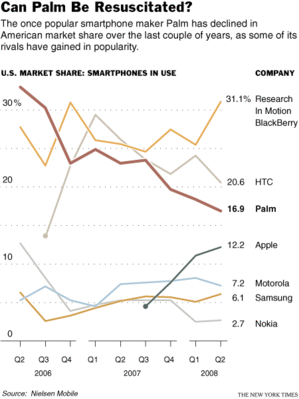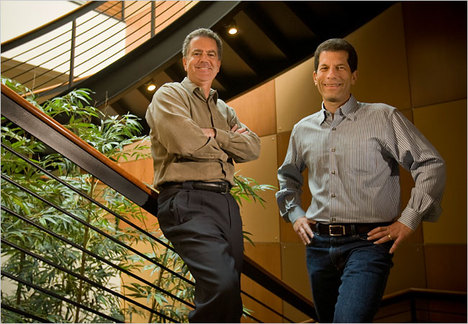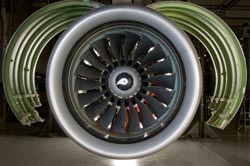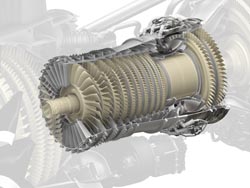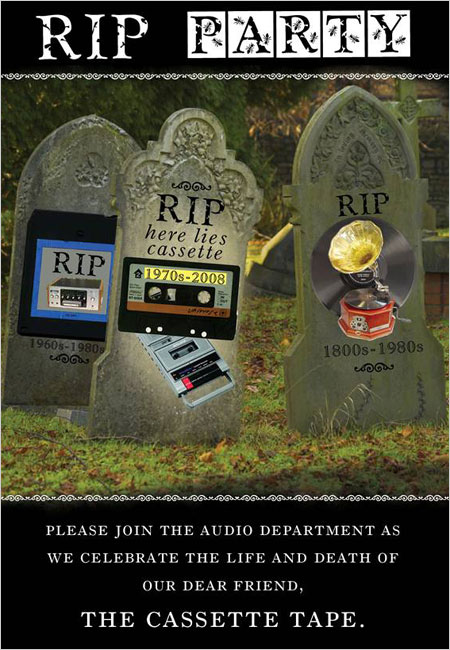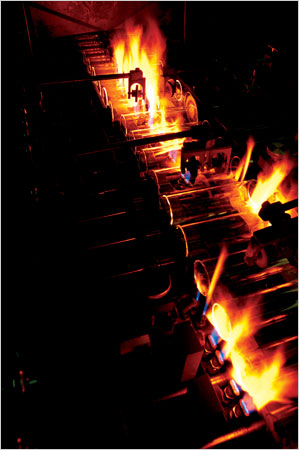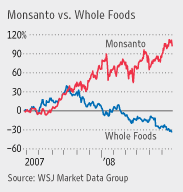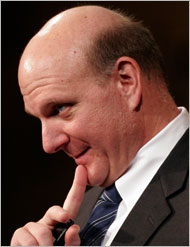
“Steve Ballmer is the second Microsoft chief executive to butt his head against the view that a new era in technology brings a new market leader.” Source of caption and photo: online version of the NYT article quoted and cited below.
(p. 4) The Yahoo affair obscures the larger story: Microsoft’s long, long struggle — since 1993 — to maintain its leadership position while the Internet grew ubiquitous. Mr. Ballmer, who joined Microsoft in 1980 as its 15th employee, and Bill Gates, his mentor who will retire next month as a full-time Microsoft employee, have certainly tried their best to avert the inevitable decline of the company’s influence.
In 2000, Mr. Ballmer credited Mr. Gates for noting that no company in the computer business had ever stayed on top through what Mr. Gates called “a major paradigm shift.” The two men wanted Microsoft to be the first company to achieve that goal. An interesting challenge, but some problems are of a size that dwarf the abilities of multibillionaire mortals.
In a 1995 internal memo, “The Internet Tidal Wave,” Mr. Gates alerted company employees to the Internet’s potential to be a disruptive force. This was two years before Clayton M. Christensen, the Harvard Business School professor, published “The Innovator’s Dilemma: When New Technologies Cause Great Firms to Fail” (1997). The professor presented what would become a widely noted framework to explain how seemingly well-managed companies could do most everything to prepare for the arrival of disruptive new technology but still lose market leadership.
It’s Google, of course, that has developed the musculature to step forward and lay claim to being Microsoft’s successor as industry leader in the Internet era. If there had been any way Microsoft could have prepared for this day, it had ample time to do so. In 1993, fully five years before Google’s founding and two years before Mr. Gates’s memo, Nathan P. Myhrvold, then Microsoft’s chief technology officer, wrote his own memo, “Road Kill on the Information Highway.” It spelled out in prescient detail how each of many industries would be flattened by the build-out of digital networks, and it said that the PC software business would be no exception.
For the full commentary, see:
RANDALL STROSS. “Digital Domain; The Computer Industry Comes With Built-In Term Limits.” The New York Times, SundayBusiness Section (Sun., May 18, 2008): 4.


